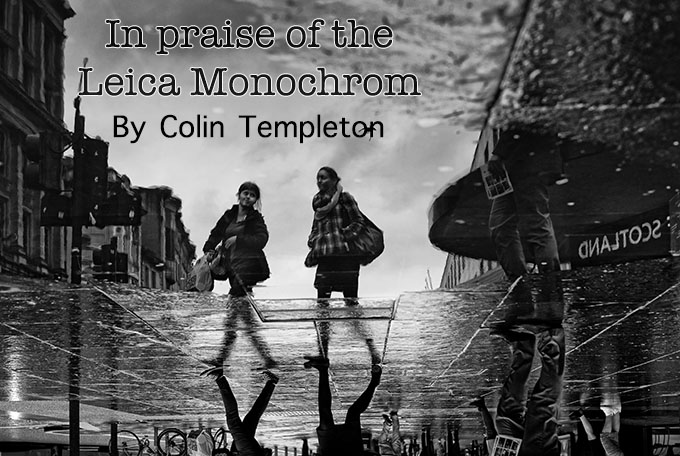
In praise of the Leica Monochrom
by Colin Templeton
Hi Steve,
I’ve been a regular visitor to your site over the years, and thought it was time I contributed something, rather than continue to sit on the sidelines.
I work for a national newspaper in Scotland. I love my job – I’m based in Glasgow, as is my newspaper, so much of my work is in and around the city, although I also get to see a fair bit of Scotland.
But the city is what fascinates me. And when I’m not working I get out and about with my Leica M Monochrom. I love to document everyday life on the streets. I’ve owned, and used, a Leica M6 since the mid-nineties, and always liked the images it produced. They seemed to have more life to them, dare I say it, more soul than the pictures I got from the Nikon F5 I used for work, and the rangefinder camera was simply much more fun to use.
When I started at the newspaper full-time, around five years ago, they supplied the camera gear needed for the job, so I was left with all the Nikon kit I had used as a freelance. I sold it all (thank you, eBay) and bought a Leica M9. That camera was a revelation – essentially the same as the M6, but with the advantages of being digital. And when it was announced that Leica were launching a black and white only M, I didn’t hesitate – I traded in the M9, and found myself with an M Monochrom. I’d been converting the majority of my shots into black and white anyway.
Eighteen months later, I’m still smitten by this camera. Picking it up make me want to go out and shoot with it. And I do, pretty much every day (I post a daily photograph on Blipfoto: http://www.blipfoto.com/contraflow). A lot of praise has been heaped on the M Monochrom, and I find myself much in agreement. The camera is very small, light, unobtrusive, a joy to shoot with, and the files it produces are like nothing I’ve seen before. You can step on them hard and they just don’t break up. Not that you need to be hard on them, because if exposed correctly, they need hardly any work. Everything is in the file – it just needs to be breathed on a little to coax the best from it.
One of the best things about the M Monochrom is that you get to use Leica lenses on it. I’m an ex-Nikon user, and now a full-time Canon user, so I know all about the image quality of those two systems. But the tiny Leica lenses have detail and character in spades, by comparison. It almost seems ludicrous how heavy and large a pro Canon DSLR is, when the diminutive Leica has the same size sensor, and much smaller, faster, sharper lenses. Any DSLR I’ve ever used feels like the computer it is. I can’t bond with it. And when I see the results, they fulfil the brief, but it almost feels as though the camera made the picture, not me. That’s a good thing, because it makes the job easier. But there’s no fun involved. Using a Leica rangefinder is fun. You have to really slow down and think. Just take a single shot and make it count. When I get a picture from a Leica M that I’m happy with, I really feel as though I made the image, not the camera.
My two favourite lenses for the M Monochrom are the 50mm M Summilux ASPH, and the 28mm Summicron ASPH. Occasionally I’ll use an old 1960’s 90mm Tele Elmarit “fat” version 1, but generally it’s just the two lenses for me. And mostly it’s the 50mm. A lot has been made about the modern aspherical lenses being too sharp, too clinical in their rendering for the M Monochrom sensor, but I just don’t see it. I think the modern 50mm and 28mm render beautifully, and with plenty of character. But maybe that’s just me.
Anyway, I could go on and on. I adore the M Monochrom. It doesn’t get in my way, it just allows me to take great pictures. It’s like my M6, loaded with an endless supply of all my favourite black and white films.
My website is: http://colintempleton.com/
I’m also a member of the Elephant Gun photography collective: http://www.750grain.com/colintempleton/
And I’m on Twitter: https://twitter.com/colintempleton
Very best wishes, and thank you,
Colin

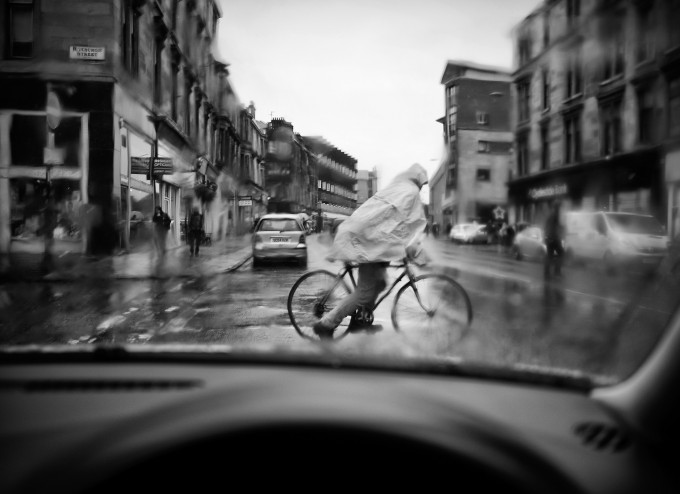
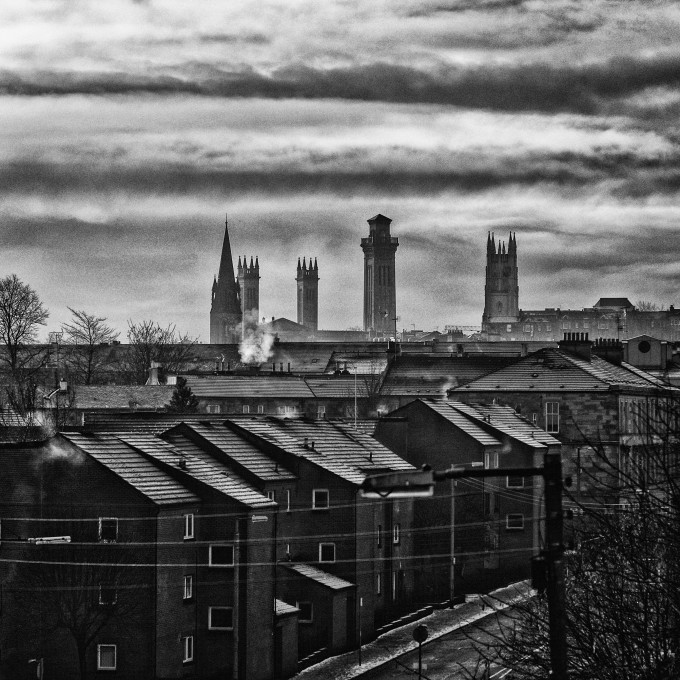
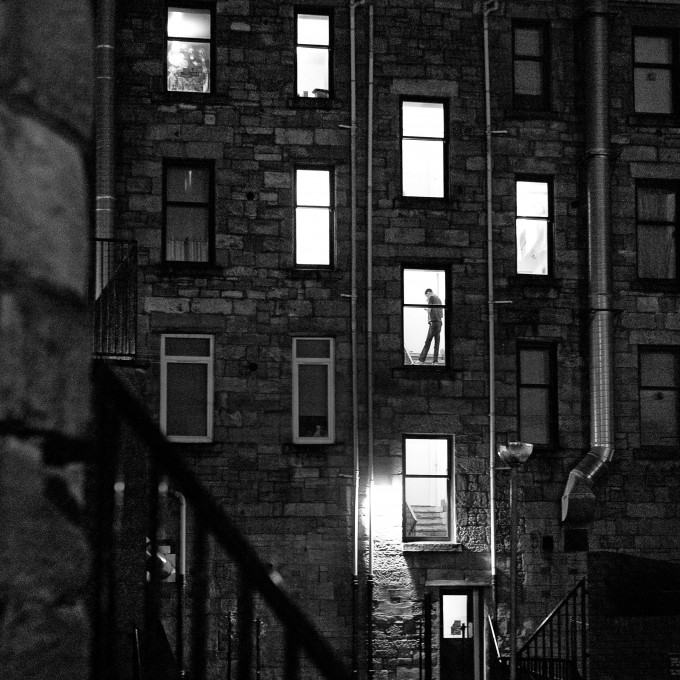
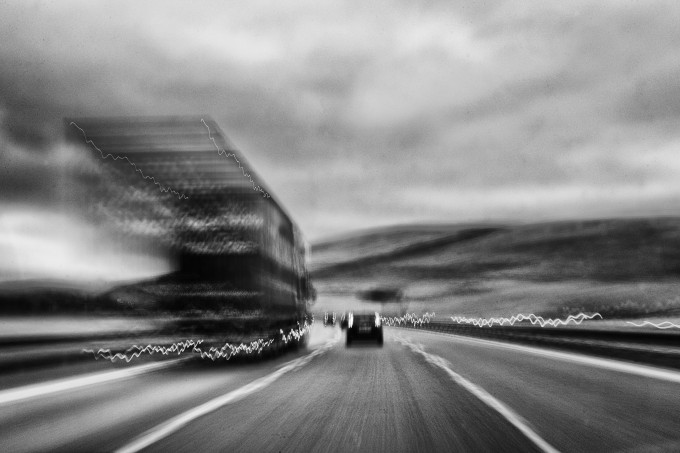
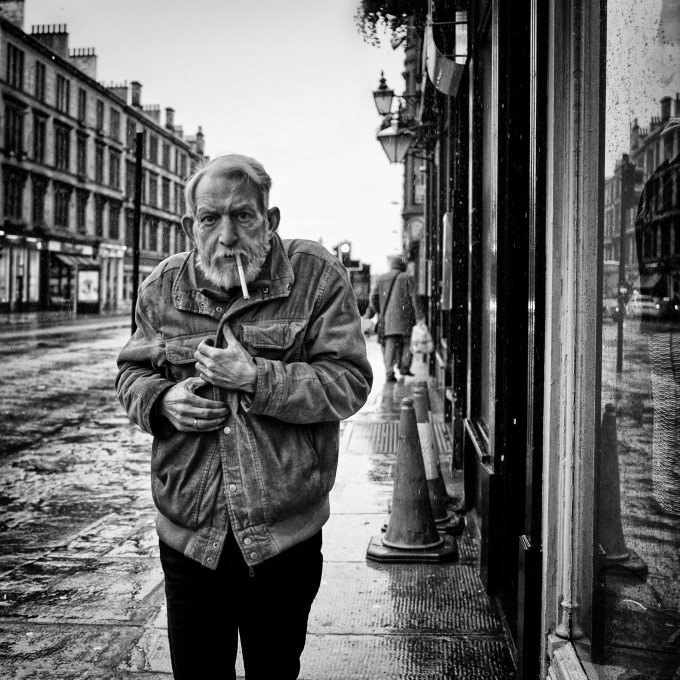
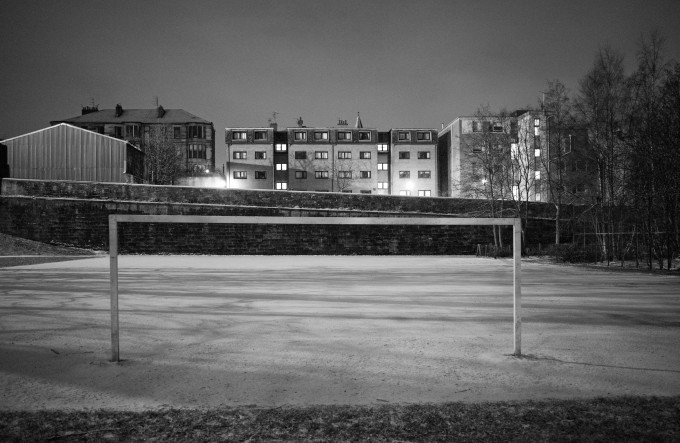
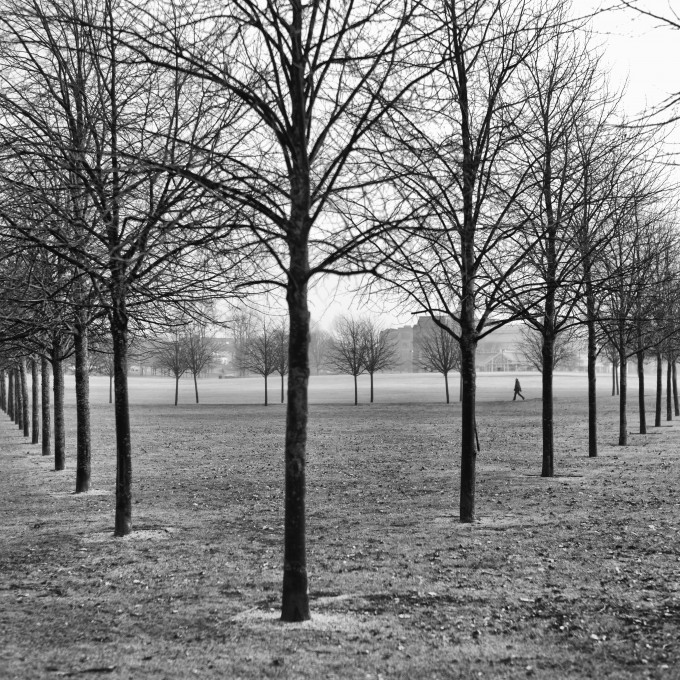
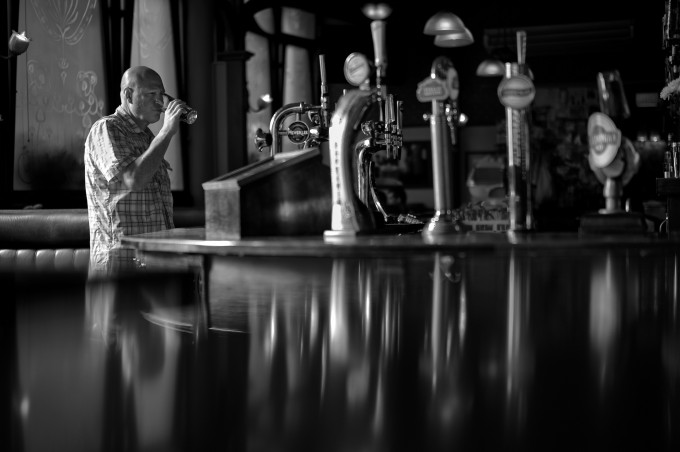
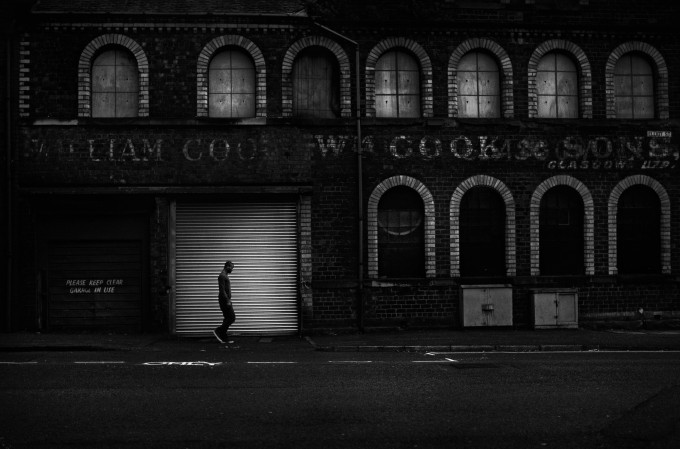
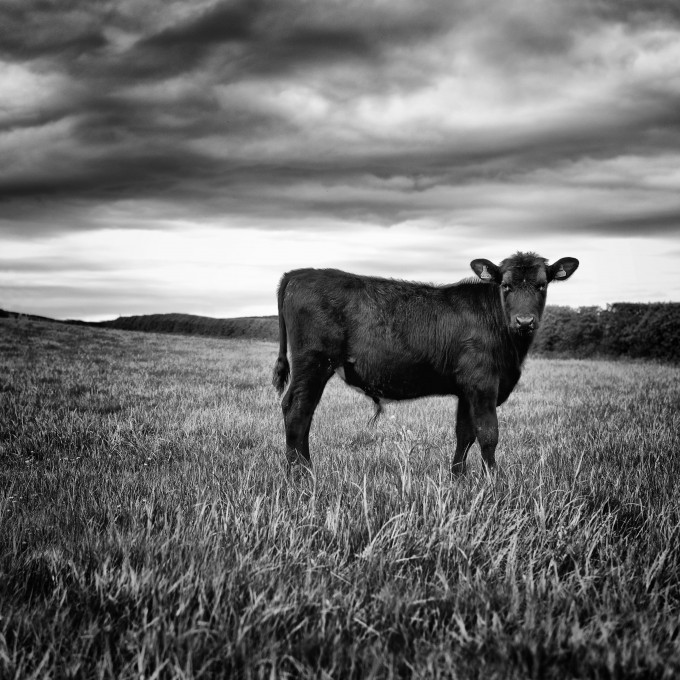
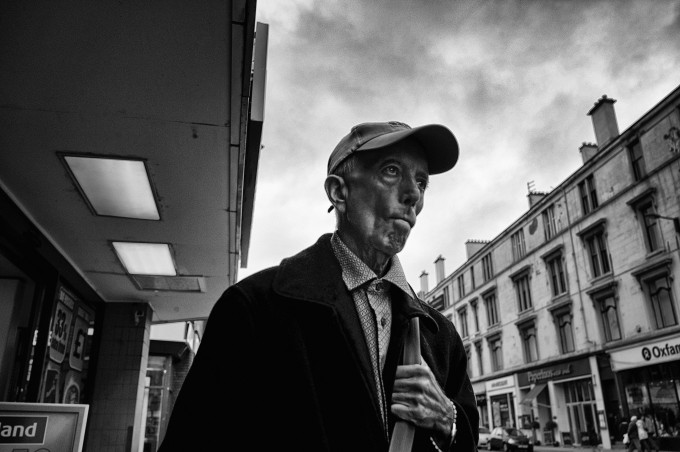
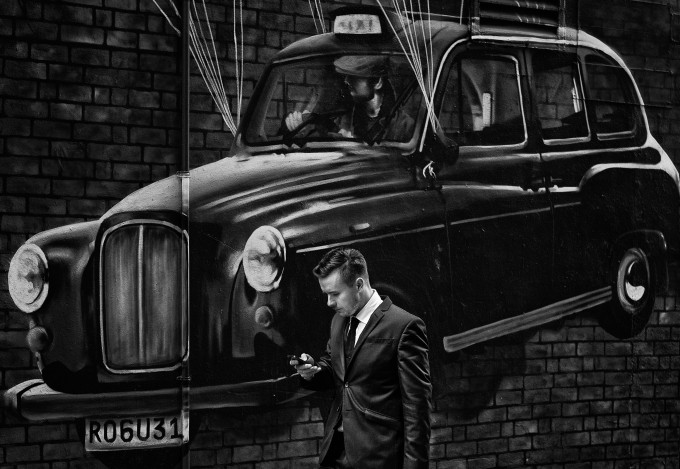
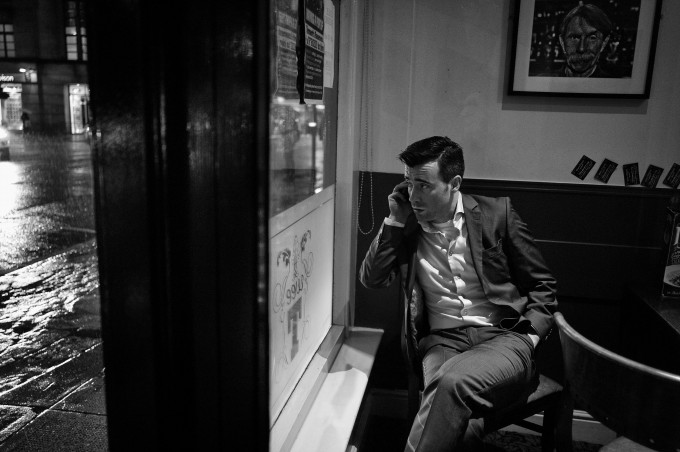
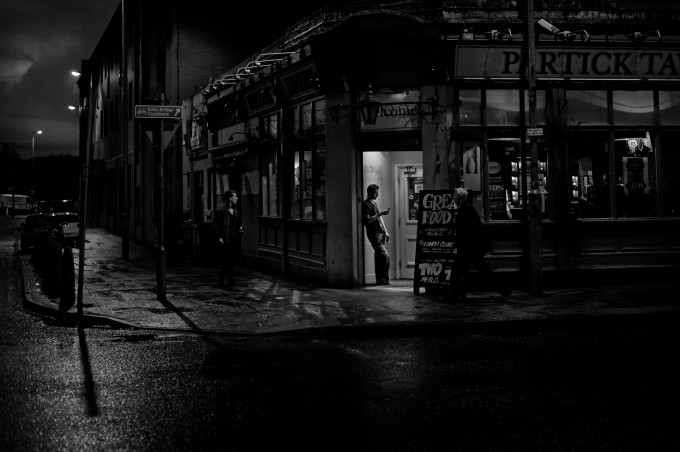

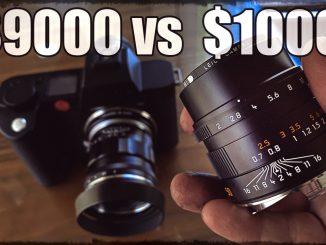
Wow, beautiful photographs! Great eye! What a great photographer!
great work. love your website!
Hi Colin,
great shots.
As an editor I would ask you to dump your Canon gear and stick to your MM, maybe get a M-P too if color is needed.
I’m still on M8 with Digilux 2 and V-LUX 3 as back up. No complains from the papers.
Most of the pics published on PSO are shot with Leicas.
Keep up the spirit and enjoy life!
http://photoshowoff.dk/fotografer/3025-paul-sehstedt/billeder/?offset=96
Excellent photos- congratulations and gives us a nice insight into Glasgow life. However, I do feel you are sometimes a little too heavy handed on the SF2. If the first thing you notice is the processing and not the image, that is a distraction you don’t need. Nos 5, 11 and 12 come to mind as shots that you could have backed off from full intensity with benefit. Overall though, the images are very strong.
So . . .
I find myself agreeing (somewhat) with Really Leica – STOP! Don’t hate me . . . Yet . . .
The shots are beautifully composed and have a wonderful artistic eye but for my taste they look too processed.
I must say that ‘Really Leica’ sounds like a bit of an unhappy chap and perhaps he doesn’t know how to express himself! 🙂
Leica’s ARE expensive and as someone who has returned to photography after a 10 year hiatus I am considering all of the M’s including the Monochrom.
The price is high, it’s not the “best” camera in the world, but what is the “best”?
I am a musician, actor, painter and motorcyclist.
In my studio I have several guitars but something happens when I play my 1957 Gibson LP custom . . .
I have several motorcycles but Something happens when I ride my harley . . .
It’s about what YOU want from the tools that give your creation inspiration and joy.
I’m no Leica fanboy but after holding one in my hands this week, without even shooting it I can see myself getting into these camera’s and lense.
Much love to all
J
PS. I’ve been shooting for a week with the new Sony a6000 and the new Voitlander 50mm F1.5 (Chrome) and this combo has ignited my creativity . . . What will a Leica Do??? 😀
Beautiful shots!!! I am interested in the MM. I shot a M9 and always lean to Black and White but don’t always get these results. This may be the tipping point!
I enjoyed this and thanks for making me think of lovely Glasgow. The Monochrom is a masterpiece of design. A camera I dream to have one day. The other Leicas, except the M3 and MP, don’t come close. The Monochrom is truly a perfect storm of concept and coherence in my opinion.
“Absence of limitation is the enemy of the artist”
Thank you for sharing Colin ! I do find some pictures looking unnatural. More specifically the ones with a human subject, for example the man in the street with a cigarette, another man with a cap, the man with the mural painting on the wall … I do believe that asph lenses are “responsible” for that, in combination with a certain post-processing. Shades in faces become kinda “muddy”. Files taken with a Noctilux F1 for example, can take a lot more of post-processing before becoming “HDR”-like. But I just “discovered” something interesting … there’s a big difference between looking at the pictures full-size vs. web size. At large size, the “artificial” look kinda disappears. I’d conclude that one should post-process according the output and ease down on “web-sized” pictures. I’d love to hear your opinion on this, as well on your toughts about some pictures looking “articfical” or not ?
It’s ok if that’s what you like, I just wonder if you agree or don’t agree !
( I do admit, I went today to see an exposition of William Klein at Amsterdam … quiet “natural”)
Great stuff. Thanks for sharing.
Nice work squire! Keep shooting 🙂
Hey there Colin good to see you on here, some of your images are familiar from my daily visits to Blip. Great write up, you’re pushing me towards spending another 7 grand !
Thanks, Dave.
Thanks for sharing Colin. I’m a fan big fan of the MM and love it. Great to see your favourite images here and really provide me with some thinking for my photography……I think they call call that inspirational.
As to all the comments on PP, I think people forget it is a personal thing and it’s “their” standards or nothing at all….!!
Thanks, Andy.
Really enjoyed your work and the processing is to my tastes.
Hi Colin!
I think your images are really good. Great compositions and beautiful idéas.
However I think they would benefit from slightly less ”bring up shadows and pull in highlights”.
I know it is tempting, I sometimes fall in the same trapp.
Trust your images, they are great in their own right!
Thanks!
So much to enjoy in these Colin, as ever.
Great to see your work here too.
Thanks, Ian.
It’s been fascinating reading the comments and seeing which way the wind blows.
There are clearly those that like this photographers “interpretations”, pp not withstanding, and I count myself among them, despite the fact that I abhor HDR in colour images and where I find the results to be totally unnatural.
The “rules” in colour photography, if indeed one can say there are any, go completely out of the window when shooting in black and white, and which itself is a totally unnatural way of looking at the world. To make up for the lack of colour, one has to make use of form, shading, contrast, and composition, and if a photographer wishes to have a unique “voice” and stamp his personality on his images, one must not follow the crowd down the road of mediocrity where everything conforms to a pre-conceived notion of what is right and wrong.
Already we have been asked to view another photographer’s work which “conforms” but which I find the subject matter all to be posed, artificial, and lacking in any real impact as far as the images are concerned. So where does this leave us?
My favourite image in Colin’s portfolio is number 5, and this is despite some nasty posterization in the sky; I find the image moving despite its alleged shortcomings. One can see and “feel” that the man is feeling the cold in the way he is hunched up against the cold and attempting to pull his blouson style top-coat to. We see a lot of so-called street photography on this site but which for the most part, IMHO, is no more than someone pointing an expensive camera, pressing the shutter and heigh ho, a brilliant image is the result.
I’ve no doubt thrown the cat amongst the pigeons with my views, but I do wonder if Van Gogh were today an unknown photographer and he posted images of his sunflowers here just how much stick he’d come in for.
Superb photography … well done!
Thanks, Jeff. Post processing really is very subjective. Personally, I like my prints quite punchy. These do look far better as prints. You can never please everybody. I’ve looked at comments on other people’s blogs on here, and some of it is utterly vicious, so I knew that putting my shots up would be like sticking my head above the parapet, but what the hell – I’ve got a thick skin.
Several comments for you. First, regardless of the processing, I think you’ve got an excellent eye for capturing interesting, dynamic images. There’s some great street photography in here. Second, regarding you’re processing, personally I love it. It really pulls me in and makes me want to see a print up on my wall. Third, you deserve a medal for how you handled that incredibly rude troll at the start of the comments. My hats off to you. It was an entertaining response.
To me some of these are a bit over cooked (HDR?). But others are simply wonderful with the very first being my personal favorite.
Great stuff mate!
Some of the best M Monochrom shots I’ve seen to date.
I just picked one up and will be road testing it on the weekend…
ET
Thank you, and good luck with your MM.
Thank you all for your varied comments, and thanks to Steve and Brandon for putting them up. When all is said and done, they’re only photographs, and completely subjective to people’s preferences. As, I think, the comments bear out.
Cheers!
Great work!
I knew it was a mistake commenting. How do I delete my comment?
Amro, you cant delete your comments.. you can em steve to request delete feature as i have tried but he never gave any answer.. in meantime just be careful and proofread before you hit that enter button 😉
Very impressive photos! But I don’t understand the postprocessing, and I have to say I hate it… For me, it will be much better if the photos are more “natural”.
Thanks!
Wonderful shots, Colin. Great mood. Very inspirational.
These are really wonderful. I think the Monochrom really works in our “dull” English weather. Not that it does’t work in sunny weather, but it excels in the English climate, as can be seen in these photos.
It’s the only camera I covet and the only camera I know I’ll never be able to afford.
Very well done, sir.
Scotland has a climate as well. Last time I checked, Glasgow is in Scotland. lol.
Maybe he’s predicting the future?
Terry, I remember visiting Northern England and Scotland many years ago in a very rusty, very leaky Renault 4. Creaping up a steep hill in first gear, rain, rain, steamed up windows, driving through Glasgow, Edinburgh, Loch Ness… Having the underside of the car checked with a mirror on a stick, policemen laughing at the wooden sports steering wheel I had installed in that car…
Ahh, Scotland certainly has a climate!
Hi, Michiel.
A Renault 4? Now you are giving your age away. The mind boggles at the thought of your hand-crafted steering wheel. At least you learnt why we English talk so much about the weather.
But what’s with the mirror? Are you Dutch? Could the police have been looking for signs that you had visited a kafe prior to your arrival in England?
Hi Terry! Yeah, Dutch and 61. My twin girls will have their first birthday party in two months. That visit must have been 1984 or so: coming off the ferry in. Ew astle, bomb scares, that sort of thing. They searched the (quite rusty) underside of the car. That first gear climb was in the North Yorkshire Moors. The year before I
had to walk up it, pushing my bicycle…
Thanks!
Wow, some really awesome pics here. A few of them are just a bit too overprocessed but then others are exactly the look I would go for. Either way, the composition and artistic vision of the shots is brilliant.
Great white-up. Your sixth paragraph is a perfect description of the Leica advantage. The photos are nice too, though I found myself wishing some were treated less, particularly the ones showing people. They verge a little on HDR and sometimes almost look like charcoal drawings instead of photographs. Most though, like the bull and the bike rider, are terrific.
“Man framed against cloudy sky”.
I’d have to look again with a better screen than this one, but what I see now is unnatural grain due to probably oversharpening, strange lining with the face, unsharpness, unnatural borders between sky and facades. The sort of thing other camera brands get blasted for. The composition is very intersting though.
This doesn’t relate to the camera (that is a really wonderful one) but to the employment of Silver Effect… This is what i wrote upper, using High strucure enhancement leads to this kind of bad results…
Seeing the images in large shows what you described.
Thanks for enlightening me. This is probably why I’m averse to heavy pp (or just not good enough at it).
Plenty of great compositions here, Colin. I especially like the last image.
I don’t really buy into the idea that the Monochrom produces deep files which are easy to manipulate and process. Most of the images here show a marked, unnatural light: the cow, the man with sunken cheeks, man under the taxi poster, man with cigarette, man with cell-phone, the highway shot…none of these look right with respect to the lighting. Of course, this may be artistic license, but the “Press” and “Essay” images on your website show light as I expect to see in the real world.
These observations lead me to conclude that the MM actually produces weak and thin files, whose manipulations to get correct darks, greys and highlights require either greater processing skills, or plenty of patience to arrive at the correct balance to what we consider “normal” lighting.
For the record, I have seen Monochrom images with natural tonal rendering on the internet, but they continue to be few and far between. At least, they number less than the MM owners who claim to prefer the artistic vision inherent in the high-contrast, moody lighting they produce with their cameras! 🙂
See Marco Wolff ‘s post, 3 days ago 🙂
Thanks for pointing out Marco’s post, Pom. You’re right: His outdoor shots show the same unnatural treatment of light I see so often made with the MM.
Sorry that is not what i meant… In fact i think Marco is doing a good job not overprocessing his files on the contrary (apart from VSCO effect used on some pictures). There is no “high structure” used on his files, or softly and i find the results to be very good for processed images.
I also know a very talented photographer (Robert) here in Paris who just uses a little light + contrast in photoshop with MM files and that’s all and his pictures are just STUNNING ! He doesn’t have a link to show his work yet, that’s too bad…
Wonderful series of pictures!
Has it struck anyone that some of these are not sharp (motion blur, focus off?) where they were intended to be?
It’s probably not important, as sharpness is a bourgeois concept.
Resolution and sharpness….in my opinion two items that I find very boring. Interesting when it’s key to the image created, boring just given it’s discussed far too much. An image out of focus is one thing….one which is created to inspire, interesting, composed well and the subject makes you think…sharpness not important.
Colin ticks the box on a number of levels across many of these images.
Andy, I’m sure you don’t feel that it doesn’t really matter where sharpness, if any, falls? That would place these images firmly in the “random photography” category. What I meant was that I choose where focus will be in the image, and that the image is disappointing if I don’t succeed in that.(that would be the category “good try, no cigar”). The same goes for motion blur. Nice if intended, fail if unintended but explained away later.
“Andy, I’m sure you don’t feel that it doesn’t really matter where sharpness, if any, falls?” Actually…..I do feel it doesn’t really matter if it’s close enough. And in this case I’d put Colin’s images in either the spot on or close enough category.
The image itself will take care of itself if the subject matter, light, mood, composition and other aspects outweigh sharpness/resolution. HCB would not have done so well if that was not the thinking back in his day!!
As for out of focus….it’s is “obviously” out of focus then fair point…but these are not. So my response to you, who threw up a possible question mark/issue at a technical level. My response is one that it really doesn’t matter depending on other aspects and the context of that sharpness, etc…Hence I personally find the subject a bit boring as it’s studied to the nth degree, the resolution of each sensor, etc, etc…
Yet art is subjective and so it so will matter to only those who prioritise this ahead of other aspects or do not take in the whole image over and above those technical issues.
Thanks for the reply Andy. I agree with you for the most part. Pixel peeping is interesting from a technological point of view, but it has no bearing on whether an image is interesting. What I don’t agree with is the “focus close enough” thing.
I took a street image recently with what I thought interesting composition, and that came out even better than I expected. But focus (24 mm, AF, single point, just not far enough into the corner) was not where intended it to be. Razorsharp, just not where I wanted it.
I wouldn’t dare publish it here (I did put it on FB); just not good enough. You have be very critical of your own work.
“You have be very critical of your own work.”
+1…agree
Michiel this popped up in front of me today on FB. I do not follow this blog. Interesting though regarding our commentary back and forward. Take the Leica part out of this article (could be talking about the F2 or other older camera’s.
It was more the overall point of the article which was my point. Happy reading.
http://leicaphilia.com/?p=311
Thanks Andy; appreciate it!
It’s a truly awesome camera – love it!
Hi Colin, great images some are a bit too close to HDR for my taste, but the last 3 images are stunning!
Thank you, Simon.
Very nice tonality
It is these type of posts that make me return to Steve’s site.
Great light&darkness esp. the beer drinker, the film-noir-like man sitting with a phone and the last shot … love the man in the lit window too. You are a master of mood with a great eye.
Many thanks.
Hi,
As Michiel said, even if i like the images very much, i find the processing to be a bit too much on some of them (but not all). I think Silver effect is just a dangerous tool… It adds so much texture, structure and sometimes HDR effect on pictures, you really have to be soft on using it. And please don’t use the “high stucture (hard)” presset guys, it really is a bad one, it transforms the shadows and some of the mid-highlights in midtones… resulting in loose of dynamics and grey looking image. Sometimes it is better to leave the shadows the way they are and not to try to recover the skies… Just my point of vue 🙂
I really think what marco wolff showed us 3 days ago (in his post) was the best way to process the MM files… natural and dynamic…
I’ve always found the Monochrom images, if well processed, beautiful. They stand out on their own, and the heavy post processing, filters, layers etc just buries the original character of the camera. Which is a shame.
The RAW files of my D800, when converted to B&W, don’t start out as flat as the Monochrom files appear to do, so they don’t need a lot of treatment in post, let alone filters, layers etc. It all comes down to personal taste of course.
So do i… even if i process a lot.
The MM files are really wonderful files to work with, very flat looking but full of great potential because of that.
I also depends on the lens you use.
With my Summilux 50 ASP, using Silver Effect is very dangerous because this lens is very contrasted, luminous and detailed, with my Summaron 28 f5.6 from the 50th… there you really need to push SE a lot !
The HDR look is what SE will mostly be resulting for a lot of people and i really don’t like that (enlightening the shadows + recovering highlights).
Here is a kind of process i like to achieve :
http://moz-tumb.tumblr.com/image/75342788879
Very nice image, well done.
I’ve always used colour filters with black and white film, and the MM is no different. As for layers, they’re the only non-destructive way of working on RAW files. Far from burying character, the use of layers in photoshop will preserve the detail.
If you’re photoshopping an image without using layers, every single action will cause a little damage, and eventually will result in artefacts. Of course, if you’re not too bothered about absolute quality, and want images which sparkle, straight from the camera, and need little processing, just shoot jpegs. Simple!
Same comment as Pom, I find too much post processing on some of these photos.
In particular, I feel like you were pushing too much on accentuation. You can clearly see some halos around some of the subjects. Also, I’m a not a big fan of the HDR effect.
Wow what an inspirational set of pictures and thank you Colin and Steve/Brandon for showing us these great pictures.
Just when I was ready choose a ME/M240 for the 90% BW work you made me think about the MM again. Your statement about ‘Endless supply of all my favorite BW films’ made something click.
-Can i ask y if you you used filters for the pictures displayed?
– Do you have experience with the M240 for BW?
Thanks. I do use colour filters sometimes, but none of the above shots are filtered. No experience of the M240, but I understand it can run the MM quite close.
WOW. That last picture is amazing. I really dig your work. Thanks for posting!
Truly brilliant shots.
I don’t know if another camera could have made these images, but I really like them. The content , composition and post processing resonate with me. I can’t wait to see more.
Thank you, Thomas.
Colin,
Beautiful pictures. I would love a Monocrom, but out of my price range at the moment.
I recently purchased an M2 and 35mm (v1) & 50mm (v2?) Summicrons. I love the outfit, but am realign interested in a digital body. Do the older lenses just work, or do they have to be “coded”?
Thanks.
Hi John. I am currently using my ‘old’ summicrons on the Ricoh GXR mountA12, which I found really cheap. Love the quality&the way it works. With EVF it works much better. No coding needed. Highly recommended if Leica is too much for your budget!
Really great shots Colin. Love the subjects&compositions. In the processing I think you got a bit to far for my taste. I am sure they make good prints and I love the fact that you posted highres. Personally, if these were in an add for the monochrome, I wouldn’t buy it. If it were just the ‘cowshot’ I might! (given that I had the budget in the first place)
The older lenses work without coding. If you want to you can select them in an in camera menu instead of having them
8 bit coded. The coding just saves time if you change lenses often and adds a little resale value.
The older lenses work great on the MM. Most can be coded, but don’t need to be – you can programe the camera to “know” which lens is attached. Thanks.
Brilliant Colin
Thank you kindly, guys.
stunning compositions and very…..inspiring.
Just when I get the M Monochrom out of my head in walks Colin who really knows how to work the camera as well as make its files worthy of such a sensor. Thank you for sharing your images but please no more, I can’t afford the camera now.
Great shots Colin. I’m also in love with my M Monochrom and almost always have a 50mm lens attached to it, either the non-APO Summicron, the modern ZM Zeiss C Sonnar, an ancient, uncoated Sonnar from the 1930s and soon (its out for CLA) a 1949 Summitar. The Monochrom sensor has such incredible resolution and tonality that you can really see the nuances of whatever you shoot as rendered by whatever glass it is focused through.
Colin, fantastic work in showing what the Monochrom is capable of in talented hands such as yours. I often wonder how working pros separate the joy of photography from the daily grind of work, and you have spelled this out clearly. Thanks for the insights and the wonderful images!
Thank you, Ashwin. Love your work.
I’ve been stalking you on Blipfoto for a while now, I love how you manage to combine geometrical lines & patterns with a very empathetic human aspect all in the same photo, without feeling coldly voyeuristic like a lot of street photography does.
Thanks, Simon.
Beautiful and powerful images Colin. Have you used any on camera filters? I too love my MM its by far the most inspiring and intriguing digital camera I have.
Thank you for sharing
Jorge
Thank you. I do sometimes use a yellow, or an orange filter during the day, although all the shots above are unfiltered.
Wonderful work and I can see the camera inspires you.
I have one and agree it’s nothing short of magic to use.
Clearly not a camera for everyone but, yes, for me it does get me fired up to take the best shots I can.
Thanks for the reply Colin. Not having done the same experiment, I couldn’t really say whether what you say about the difference is true. More importantly, I don’t think it matters at all. So many great images have been and are made with such a great variety in gear, it really is not important. I’m as interested in gear as the next guy, but the whole “my gear is exceptional” thing just doesn’t hold water.
No, it doesn’t matter at all. I love shooting with my rangefinder, but if I handed it to my mum, she wouldn’t be able to use it. She loves her iPhone 5 for shooting pictures, and doubtless wouldn’t think twice about choosing the word ‘exceptional’ from a list of superlatives.
Each to their own.
Colin,
I can just say EXCELLENT job.
All the best
Dimitris V. Georgopoulos
Photographer at Large
Athens, Greece
Cheers!
I read an article that the Leica Monochom cameras produce very flat files, especially in the midtones- and that as a result people tend to overprocess them and add lots of contrast. That seems to be what I have generally observed on this site from that camera. Maybe the amount of post processing has become totally a matter of taste and personal style. I think these started out as nice images but the processing is (at least to me) clearly overdone on some of them.
I agree. I think that’s they’re all really good except the last four pictures have a very unnatural look.
Thanks, chaps.
Jeff wrote:
“I read an article that the Leica Monochom cameras produce very flat files, especially in the midtones- and that as a result people tend to overprocess them and add lots of contrast. That seems to be what I have generally observed on this site from that camera. Maybe the amount of post processing has become totally a matter of taste and personal style.[…]”
I sure have noticed many dingy renderings from this particular machine, on the web.
For _sure_ processing is a matter of taste and style.
I’m not crazy about tons of LR Clarity slider, myself. But this is art, and folks will please themselves — as we all surely do.
Colin’s tonal choices plainly show that the info is in the files, and that even low-tone shots can be mapped with just enough zing that you’re not gasping for air out of mucky greys — hurrah!
Wow – those shots are simply stunning!!
Many thanks.
Interesting images, compliments there for sure. But given the heavy emphasis on the gear used, and the heavy post processing in most of the images, which makes any influence camera and lens might have had disappear, can Colin please explain what makes these images so special they couldn’t have been made with any other full frame camera?
They could. He just likes this particular camera. And when film was the primary medium, you almost always burned and dodged when printing. THATS the artistic part..giving the image depth and dimension. Get some of Ansel Adams books, and learn. You can do point and shoot with your iphone.
Cory, please read my post, carefully, again? Thank you.
Its about the ART, NOT the camera. Any full frame Nikon or Canon, or Sony, COULD reproduce these images.
I fully agree Cory.
Just like an analogue negative, a RAW digital file needs to be post processed. It’s down to personal taste how heavily or lightly this is done, or indeed, interpreted.
I’m not putting these shots out there to say that they’re so special they couldn’t have been done with any other camera. I’m not even saying they’re special. They’re just some of my favourite shots, which I took on my favourite camera.
I have had some of these printed up large and, regardless of composition, content, or post processing, the detail and tonal graduations are astonishing, like nothing I’ve preciously seen in prints from a 35mm sized sensor.
Great pictures. Great camera. Your statement about printing large is right on. Monochrom files can be printed quite large and are astonishing. The detail capture and tonal gradation that appears in such prints is difficult to coney over the internet.
And that’s the point. To make pictures YOU like, not for some turd like Really Leica….
I can try to explain why.
Monochrom is just a special camera for B&W. That means that is only the tones of grey that are rendered. Its spectral response is the same to the average low contrast B&W film with just a bit of tonal boost to greens. This can be better understood if you take a photo of the Gretag Macbeth Colour Checker Card. This means that you do not have in the picture all the colour rendition differences and aberrations that apart from the negative effect they have on the B&W conversion, they leave the final edit with a slight colour cast that it is visible on an accurately calibrated monitor and on the final print as well. If you carefully check Colin’s pictures you can see that the B&W is “real” and the contrast and the darks are strong as on an Agfa Record Rapid Grade 3 back in the old, good darkroom days. If you wish variations of contrast and tones with the Leica Monochrom then you have to use filters. In the kind of English light that these photographs were taken, so far as I can perceive, without a special workflow on the RAW colour captures the contrast and the rendition of the tones could not even match Colin’s photos at 60%. With a careful conversion than you should probably can get something like the 85% of those and again it would show in the tones.
Last but not least. Monochrom is a special camera but it all depends on what you wish to do and what you wish to take. If you want to pursue B&W without a Monchrom it is best to load a camera with Ilford HP5+ or TRi-X or any other B&W film and have your photos developed and printed by a good B&W Lab. If you like to have a good B&W conversion study and experiment with certain workflows and software that can give you the best results for colour to B&W conversion. But in order to get that B&W look and feel in the digital capture then Monochrom is unique.
I hope that this was of some help.
Best regards,
Dimitris V. Georgopoulos
Photographer at Large
Athens, Greece
Hi Colin, your blipfoto Stream is wonderful, Tanks for sharing
Thanks a lot, guys.
״…Absolutely awesome photos! The Leica Monochrom rocks…..” +1
its you and the camera .
incredible! Love them all!
Every photo tells a story, you are an inspiration!
Great images
Loved your style
Thanks.
Impressive stuff-..I am struggling just with a situation: should I buy a Monohrom and service my M8 or buy the new M….? – after this spectacle I think I go for the Monochrom – although just ordered Sony7AR – but they are for different uses…despite…this b&w would suit to my new summicrom 35/2 asp…which I got with relatively good price from ebay….:)
Thanks – a lot of people seem to think that the M8 produces better b&w images than the M9, but I;m not sure about the new M. Tough choice..
Really enjoyed looking at your images – thanks
Thanks, Martin.
Thanks Colin, that’s clinched it for me. I’ve just had a call from one of the local dealers to say they have a Monochrom in stock and was I interested. I’ve been toing and froing for the last 2 days but I basically knew I was going to pull the trigger especially after your post and another by Ashwin Rao a week or so ago. Great shots and thanks for sharing.
Cheers, Peter
Cheers Peter – you know you’ll love the Monochrom.
Absolutely awesome photos! The Leica Monochrom rocks! (I don’t care what anyone says). 🙂
Thank you. And yes, it does.
I like the way your tones are mapped. While they’re a dark set on the whole, there’s enough light to make for satisfying contrast.
I comment on this because I’ve seen a lot of Leica Mono shots that are so heavy on the dark-to-medium grays — and highlight-starved — that I find them dreary. On the whole, these have the highlights they need. (Imho) :^)
Keep ’em coming!
Thanks. I try to coax enough detail out of the files without going down that over the top HDR route.
Thanks for sharing your photos. They are stunning!
Thanks, guys.
Beautiful stuff!
Congratulations, and thanks for posting!
All the best,
M.
Beautiful work! stylish and recallish treatment after…
Wonderful shots! Question – how much was the out of the camera look vs having to play with contrast, burn/dodge, levels etc to get that level of pop in each image?
Straight out of the camera, the images can have a flat, murky look to them. They need a bit of burning and dodging, just like in the old darkroom days. I often use a touch of Silver Efex Pro2 as well. Thank you.
Yes this guy is a master
I’ve admired your shots on the LFI mastershots gallery before now Colin, fantastic to see more of them here too 🙂
Thank you kindly.
Wonderful mini portfolio, Colin. The “grain” reminds me of the times I used Royal X Pan 120 (1250 ISO) back in the 1960’s. Is this a PP effect, or the sensor used at max ISO? A Sassenach.
Thank you. No grain added in post. The very dark scenes are mostly at 2500 ISO. I haven’t gone beyond 3200 ISO so far.
Incredible stuff! Some of the most inspiring (and inspired) photography I’ve seen in a long time. Silver Efex?
Thank you kindly. Just a small touch of SF2 – applied as a layer, then reduced to around 30%.
“Small touch.”
You mean obliterated.
HDR look, fake grain, clarity that’s off the charts…
Why even other with all that expensive kit when you are turning the shots into something that like they were shot on a £50 P&S with art filters.
This kind of photographer is utter bullshit, for rank amateurs without the good sense to know when they are producing crap.
Wow! Cheers for that. I’m guessing you mean “bother”, and, well – it’s a grammar firestorm really, isn’t it? But I’ll fill in the blanks. Good day to you, squire.
Don’t feed the trolls. Great shots btw.
Really Leica?? Such gibberish??? Can I suggest you contribute such masterpieces of critique in some forgotten language, or not at all? I suppose there is hope your imagery is better composed, or that there may be some other means by which you might actually contribute something useful to society.
As an occasional visitor to this site, I’m amazed that anonymous comments like that from like “Really Leica” are allowed to be posted. “Really Leica” – let’s see some of your world class images then.
Nice article Colin, and interesting images
Dan Deakin
“Really Leica?” As a psychologist and expert in passive-aggressive behavior “Really Leica”‘s comments translate to: “I can’t afford Leica, I’m jealous because I can’t find a single blog, newspaper, or magazine to publish my crap shots of blurry dogs and cats and I am a bitter and angry old turd.” And your work on 750grain.com is superb as is the rest of the group’s. Well done, mate. Well done.
Thanks, guys.